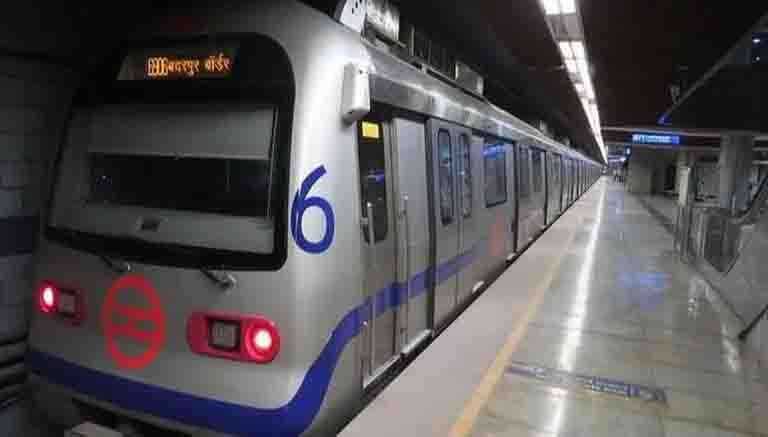 agencies agencies
NEW DELHI, May 3: Amid apprehensions of power supply disruptions in Delhi, the DMRC on Tuesday said Metro's operational need accounts for only 2.5 per cent of the total power requirement of the city, and even if there is a total breakdown, passengers can be evacuated from trains and stations using back-up arrangements.
A Delhi Metro Rail Corporation (DMRC) spokesperson, interacting with reporters on the sidelines of its 28th Foundation Day on Tuesday, also said the mass rapid transit system's operations in Delhi-National Capital Region (NCR) require around three million units of power per day.
"The 3 MU (million unit) electricity is used for traction and auxiliary requirements such as lighting and air conditioning, lifts and escalators, and fire fighting load, etc," the spokesperson said.
Amid a deepening coal shortage crisis, the Delhi government on Thursday had warned that there may be problem in providing uninterrupted electricity supply to important establishments in the capital including Metro trains and hospitals.
At present, the DMRC is handling operations and maintenance of over 390 km of network, comprising 286 metro stations, including the Rapid Metro in Gurugram and Aqua Line in Greater Noida, and is ranked amongst one of the world's largest Metro networks.
DMRC's Managing Director Vikas Kumar, when asked if there will be an impact on the Metro operation due to the impending power crisis, said,"Delhi Metro's power requirement accounts for only 2.5 per cent of the total power requirement of the city."
"DMRC receives around 2 MU electricity from power distribution companies of Delhi, Uttar Pradesh and Haryana. Around 0.9 MU power is received from the on-site solar power plant through open access. Further, 0.1 MU is drawn from the rooftop solar power plants installed on Delhi Metro's stations and depots," the spokesperson said.
"Also, in case there is a total breakdown and all grids fail, we have back-up arrangements, like batteries, inverters, DG sets to provide power to system, to evacuate passengers out of trains and stations, but trains won't operate in that condition," he told the reporters.
Another senior official said Delhi Metro's requirement on an average, per day, is about 200 MW, out of which 99 MW is received from solar power system in Rewa, and another 50 MW from DMRC's solar power system on rooftops of its buildings, and rest from discoms.
"Solar power can be used only during daytime or in sunny weather, and for after dark, our operational requirements need to be supplemented," he said.
Also, the DMRC has about 28-29 substations, so even if one substation fails, there are other options, the official said.
"Generally a long Metro line has four substations. Even if one of those reports failure, power supply will be made from other substations," the spokesperson said.
In emergency situation, DG sets will be used for supplying power to important operation-related tools and equipment such as lights, signalling equipment, lifts and fire fighting load, etc, he added.
With heatwave conditions continuing unabated, the peak power demand in Delhi rose to 6,194 MW on Monday, the highest ever for the first week of May, officials said.
The power demand had crossed the 6,000 MW mark for the first time in April. It was over 6,000 MW on several days in the last week of April amid a rise in maximum day temperature.
The Delhi government has expressed apprehensions about supply disruptions claiming shortage of coal at thermal plants. The Centre has assured that discoms in Delhi will be provided power according to their requirement.
The Union Power Ministry has maintained that a total capacity of 6,892 MW was available for Delhi and there was no shortage of supply to the capital. |
